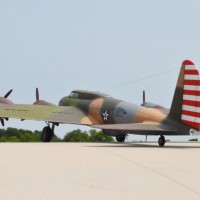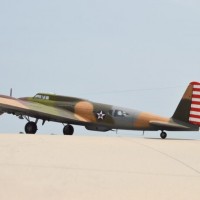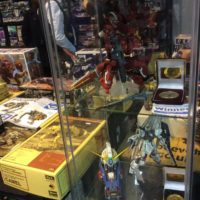Academy B-17C/D in the Hawaiian Air Depot Scheme in 1/72 Scale
In the aftermath of the Pearl Harbor attack much of the American airpower in the Pacific lay wrecked, caught on the ground by the Japanese assault. Planes lined up in neat rows alongside airfields proved easy targets for bombers and strafing fighters. Even worse, there were multiple instances of gunners on the ground firing on any aircraft within range regardless if it was American or Japanese. To address these problems commanders ordered that aircraft were to be disbursed and camouflaged while on the ground, and additional national markings applied to aid recognition in the air. The Hawaiian Air Depot (HAD) was tasked with making these changes.
The Hawaiian Air Depot scheme consisted of applying broad patches of colors from paint stocks on hand to break up the aircraft's outline. Application appears to have been limited to medium and heavy bombers. The exact colors were not documented nor were lists kept of which aircraft were repainted. Fortunately there is surviving color film of four aircraft in HAD schemes, one B-18, one B-17C/D, and two B-17Es. The Dark Olive Drab 41 upper surfaces were broken up with Sand 26, Neutral Gray 43, Rust Brown 34, and Interior Green areas. There was no set pattern and not all colors may have been used on every aircraft. Photographs of B-18s and B-17C/Ds show no uniformity, but the B-17Es follow a general concept with variation in the color boundaries. In some photographs this color pattern "fingerprint" can permit the individual aircraft to be determined. Data blocks were masked off before the new camouflage was applied which allows the original Olive Drab background to show through. The undersides were not repainted.
National markings were augmented by applying additional insignia to the starboard upper and port lower wing surfaces bringing the total to six. Thirteen alternating red and white rudder stripes were also added, but without the vertical blue stripe of the pre-war marking convention. The "U.S. ARMY" lettering remained on the underside of the wings as can be seen in several photographs. Individual aircraft serial numbers were applied to the vertical stabilizers in Orange Yellow, but the size and shapes of the numerals varied so modelers must pay careful attention. There are several photographs of HAD scheme aircraft without serial numbers, so in at least some cases these were applied later.
The application of the HAD scheme was short lived. The order was issued on 10DEC41, but when the 22nd Bomb Group B-26 Marauders arrived in Hawaii in February 1942 they received only tail stripes. Three B-17Es also received tail stripes but no disruptive camouflage. However, tail stripes and red centers to the national insignia were being painted out by some units as early as April to avoid confusion with the Japanese Hinomaru, and this was formalized by ALNAV 97 on 06MAY42.
This is the Academy B-17C/D kit, painted in the camouflage and markings visible in the color film taken of aircraft landing at Hickam Field in the weeks after the Pearl Harbor Raid. The tail is not clearly shown in the film, so I have taken the liberty of assuming this is one of the Fortresses which had not had her serial numbers applied yet.
For anyone interested in the Hawaiian Air Depot schemes I have gathered reference information, films, and photographs and archived them here: https://inchhighguy.wordpress.com/?s=hawaiian+air+depot+b-17

















Really nice! I intend to do the H-K B-17E in this scheme, thanks for the inspiration.
I really like your website, which is extremely informative and useful for anyone interested in these airplanes. Your research is really good.
Thanks Tom, that means a lot coming from you!
Definitely a unique livery... nice work - I like it.
Very cool! Kinda looks like a mashup of SEA and French WWII schemes!
Thanks guys, the HAD scheme is definitely one of the more unusual camos for US Fortresses.
Great looking paint on one of my all-time fave aeroplanes. I'd guess that some of these Hawaiian E's ended up on Midway during the battle, the ones seen in the John Ford film.
Very unusual, looks great! Looks similar to some of those pre war war game schemes.
Looks good with all those colors Jeff, well done.
Really like the colour scheme
🙂 … Greetings … 🙂 :
You got my attention Jeff, awesome build and very well applied camouflage scheme.
great write up and great research. I have been interested in these schemes since I first saw a profile of a B-17 in an old Squadron publication. Your writings have really spurred me on. Thank you for bringing this all together in a clear way. (oh yeah, and great looking model too!) Really happy to have seen this article!